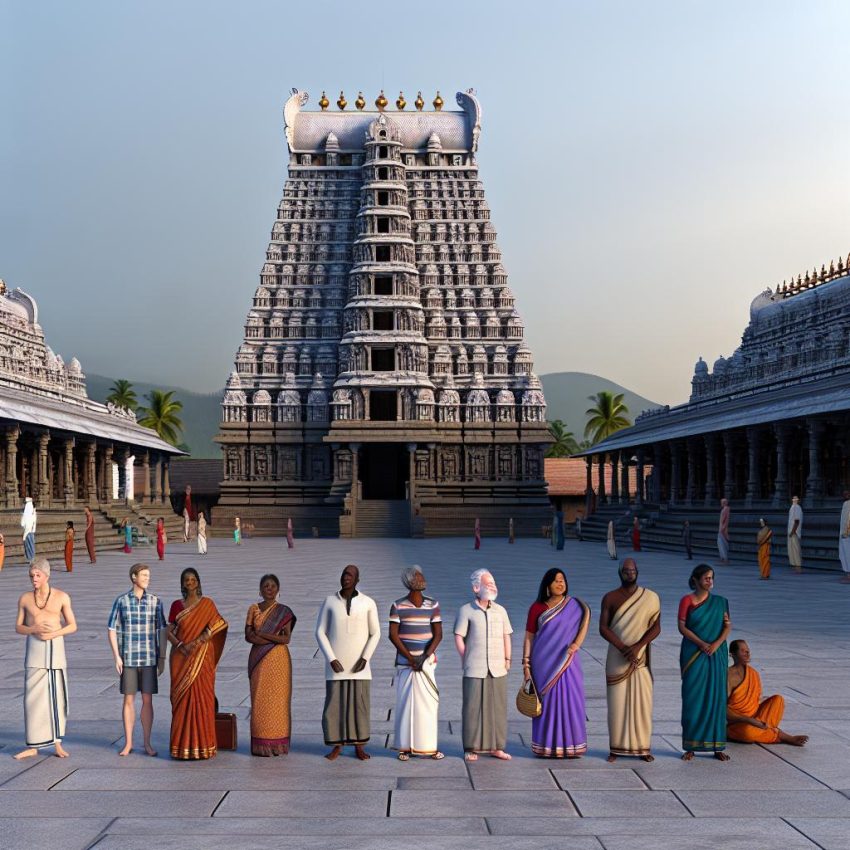Overview of Dharmasthala Manjunatha Temple
The Dharmasthala Manjunatha Temple is a significant Hindu pilgrimage center located in the state of Karnataka, India. Dedicated to Lord Shiva, who here is worshipped as Lord Manjunatha, the temple is famed for its rich historical past and its cultural significance, drawing countless devotees from across the nation. The temple is not only a site of religious importance but also a center for community welfare, education, and cultural rejuvenation.
Location and Accessibility
Dharmasthala is a small town situated in the Dakshina Kannada district of Karnataka. The town is approximately 300 kilometers from Bangalore, the state capital, and 75 kilometers from the coastal city of Mangalore. Its geographical location ensures easy accessibility by road. The temple is well-connected through a network of highways, enabling smooth road travel. A variety of buses operate on a regular basis from major nearby cities, and several taxi services are available to facilitate travel to this divine location.
Architectural Significance
The temple is a marvel of architectural excellence, showcasing a magnificent blend of traditional Kerala and Karnataka temple architectural styles. The intricate carvings and the temple’s robust structure echo the ancient craftsmanship and the artisan’s devotion to their art. These artisans have left a lasting legacy through the temple architecture that continues to inspire and attract history enthusiasts, architects, and lay visitors alike. Uniquely, the temple governance is under the stewardship of a Jain family, prominently known as the Pergade family. Despite this, the temple strictly adheres to traditional Hindu temple customs, epitomizing India’s diverse religious fabric.
Religious and Cultural Practices
Dharmasthala Manjunatha Temple is a hub of religious and cultural activities. Rituals are conducted daily, with thousands of devotees participating in the spiritual activities. The highlight of the temple’s religious calendar is the Mahotsava, an annual festival celebrated with much fervor in November and December. This festival is not only a religious event but a cultural spectacle featuring a variety of programs that include religious discourses, cultural performances, and community service activities. These events emphasize the temple’s encompassing approach toward spirituality, culture, and community welfare.
Free Mass Meal Service
An integral aspect of Dharmasthala Manjunatha Temple’s outreach is its community meal service, popularly known as Annadana, which translates to the donation of food. This service offers free meals to all visitors, demonstrating the temple’s commitment to selfless service and social welfare. Annadana symbolizes the temple’s embrace of the principle of charity and kindness. Meals are prepared in a vast kitchen facility adhering to high standards of hygiene while utilizing traditional culinary methods, showcasing an impressive balance between modernity and tradition.
Additional Attractions
Apart from the spiritual draw of the temple, the area offers additional attractions. Visitors can explore the Manjusha Museum, which houses a fascinating collection of artifacts, paintings, and historical items, providing an insightful peek into the region’s past. Moreover, the area is home to the imposing Bahubali statue in Dharmasthala, standing tall at 39 feet. This monumental statue symbolizes peace, non-violence, and renunciation, echoing Jain philosophies and representing the harmonious coexistence of different faiths within the area.
Visitor Etiquette and Guidelines
Visiting the temple comes with certain decorum and guidelines that each devotee is expected to adhere to. These guidelines ensure that the sanctity of the temple is maintained and that all who enter experience a respectful and spiritual atmosphere. Devotees are encouraged to dress modestly and act with decorum, aligning with the temple’s traditions and customs. In order to enhance the experience for visitors, the temple administration provides facilities for lodging and amenities ensuring a comfortable visit. For visitors from afar, adhering to these practices enriches their spiritual journey and enhances the sanctity of their pilgrimage.
In conclusion, the Dharmasthala Manjunatha Temple is a beacon of spiritual, cultural, and social welfare. For further details about participating in the temple’s various activities or planning a visit, consider consulting their official website or other reputable sources. This temple, with its rich tapestry of religious observance, cultural celebration, and community service, offers an enriching experience for devoted pilgrims and tourists alike.
